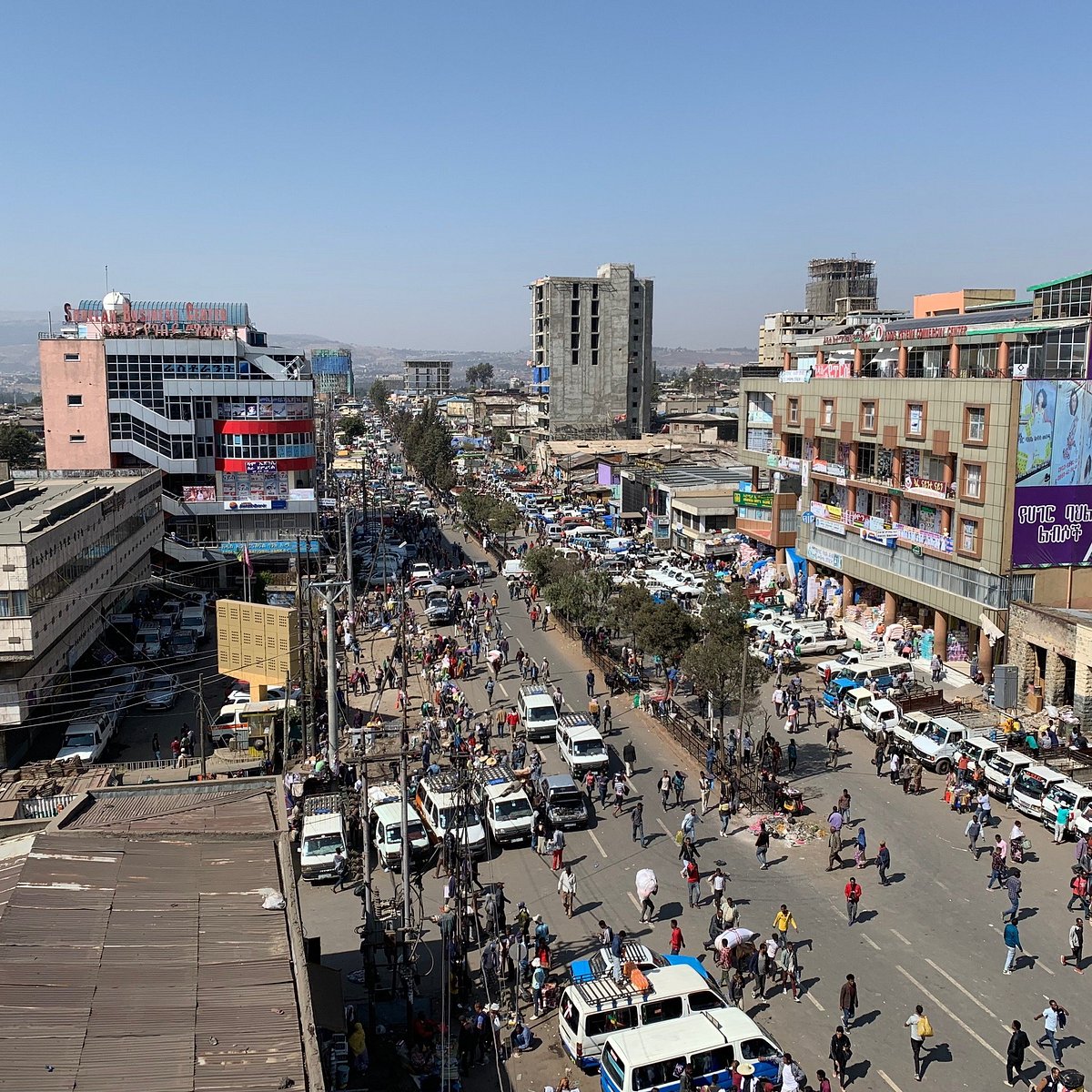Ethiopia is incredibly diverse, both culturally and ethnically. It is home to over 80 different ethnic groups, each with its unique language, traditions, and customs. The majority of the population belongs to the Oromo, Amhara, and Tigray ethnic groups. The Ethiopian Orthodox Church is the dominant religion, followed by Islam and various indigenous beliefs.
Ethiopia boasts stunning landscapes and natural beauty. It is often referred to as the “Roof of Africa” due to its high elevation and mountainous terrain. The country is home to the Ethiopian Highlands, including the Simien Mountains and Bale Mountains, offering breathtaking vistas, rugged peaks, and unique wildlife.
This article explores the best places to visit in Ethiopia.
Lalibela
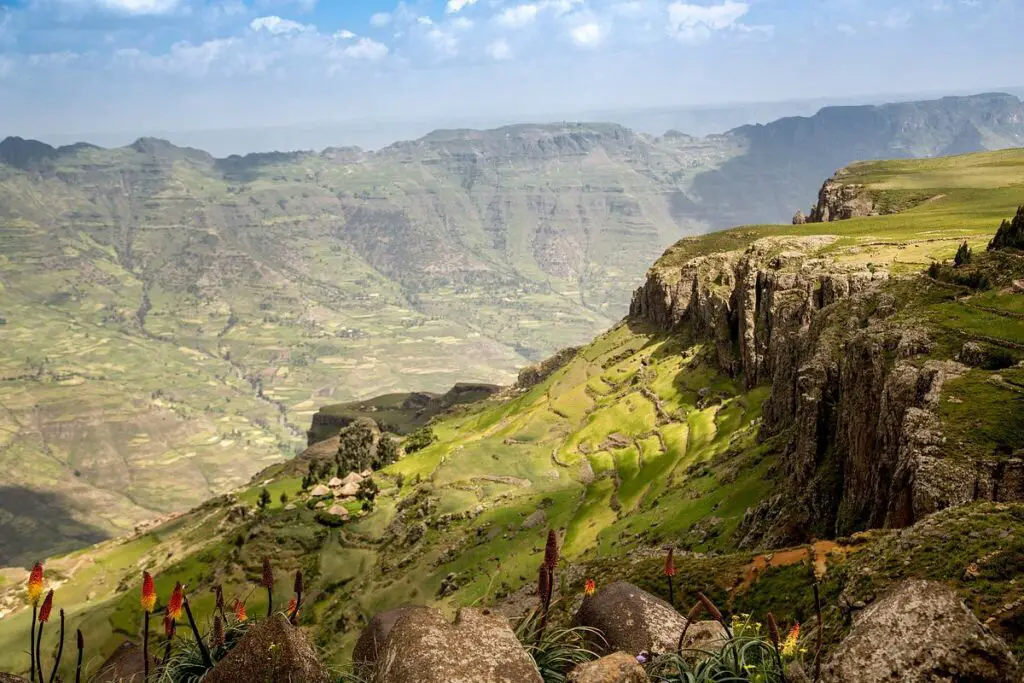
Lalibela is a small town located in the Amhara region of northern Ethiopia. It is renowned for its rock-hewn churches, which are considered one of the greatest religious and architectural wonders in the world. Here’s more information about Lalibela:
Lalibela is famous for its eleven monolithic churches carved out of solid rock. The churches were constructed in the 12th century during the reign of King Lalibela, who aimed to create a “New Jerusalem.” These remarkable structures, designated as a UNESCO World Heritage site, are a significant pilgrimage site for Ethiopian Orthodox Christians.
The rock-hewn churches in Lalibela are divided into two complexes, known as the Northern and Southern groups. The Northern group comprises six churches, including Bete Medhane Alem (the largest monolithic church in the world), Bete Giyorgis (the most iconic and well-preserved church), and others with unique architectural features and religious significance. The Southern group consists of five churches, including Bete Gabriel-Rufael, Bete Merkorios, and Bete Amanuel.
The churches in Lalibela exhibit exceptional craftsmanship and architectural precision. They were meticulously carved from the top-down, with each church having a distinct design and layout. The interiors feature beautiful frescoes, religious artifacts, and ancient manuscripts.
Lalibela is a significant destination for religious pilgrims, especially during religious festivals such as Ethiopian Christmas (known as Gena) and Ethiopian Easter (known as Fasika). Pilgrims gather from different parts of Ethiopia to celebrate these important religious events in Lalibela.
Addis Ababa

Addis Ababa was founded in 1886 by Emperor Menelik II and quickly grew in importance as a political, economic, and cultural center. The city’s name means “New Flower” in Amharic, reflecting its status as a newly established capital.
Addis Ababa serves as the political and administrative capital of Ethiopia. It is home to the Ethiopian government, including the offices of the President and Prime Minister, as well as numerous diplomatic missions and international organizations such as the African Union (AU) and the United Nations Economic Commission for Africa (UNECA).
Addis Ababa is a vibrant city with a rich cultural scene. It is known for its diverse music, dance, and theater performances. The National Theatre, Hager Fikir Theatre, and other venues regularly host cultural events and performances showcasing traditional Ethiopian arts and contemporary works.
The city is home to several museums and landmarks that provide insights into Ethiopia’s history and culture. The National Museum of Ethiopia is famous for housing the fossilized remains of “Lucy,” an early hominin dating back over 3 million years. Other notable sites include the Ethnological Museum, Holy Trinity Cathedral, and the Red Terror Martyrs Memorial Museum.
Addis Ababa is renowned for its bustling Mercato Market, one of the largest open-air markets in Africa. Here, visitors can explore a maze of stalls selling a wide range of goods, including traditional crafts, textiles, spices, and fresh produce. It offers a vibrant and authentic shopping experience.
The city has several parks and green spaces that provide recreational opportunities and a respite from the urban environment. Entoto Park, Sheger Park, and the National Botanical Garden are popular destinations for locals and visitors alike.
Simien Mountains National Park

Simien Mountains National Park is a UNESCO World Heritage site located in the northern part of Ethiopia. Here’s more information about Simien Mountains National Park:
Simien Mountains National Park is known for its breathtaking mountain range, rugged cliffs, deep valleys, and dramatic escarpments. It is often referred to as the “Roof of Africa” and is home to Ethiopia’s highest peak, Ras Dashen, standing at 4,550 meters (14,928 feet) above sea level.
The park is recognized for its unique and diverse ecosystem. It is home to several endemic and endangered species, including the Ethiopian wolf, Walia ibex, and Gelada baboon. The park also boasts a variety of bird species, making it a paradise for birdwatchers.
Simien Mountains National Park is a popular destination for trekking and hiking enthusiasts. The park offers a range of trails and routes suitable for different skill levels, allowing visitors to explore its stunning landscapes, encounter wildlife, and enjoy panoramic views of the surrounding mountains.
The park features numerous stunning viewpoints and attractions. These include the awe-inspiring cliffs of the escarpment, such as the dramatic “God’s Bridge” and “Eagle’s Nest.” Chennek, a high plateau within the park, offers breathtaking views of the mountain range and opportunities to spot wildlife.
The park is also of cultural significance as it is home to the Amhara and Tigray people, who have lived in the region for centuries. Visitors can interact with local communities, learn about their traditions and way of life, and even arrange cultural experiences such as homestays or traditional music and dance performances.
Axum
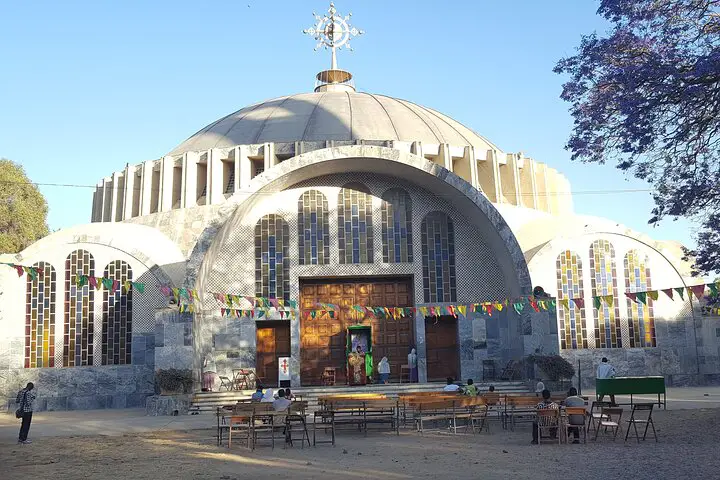
Axum, also spelled Aksum, is a historical city located in the Tigray region of northern Ethiopia. It was the capital of the Aksumite Empire, one of the most powerful civilizations in ancient Africa. Here’s more information about Axum:
Historical Significance: Axum is recognized as a UNESCO World Heritage site and holds great historical and cultural significance. It was the center of the Aksumite Empire, which flourished from the 1st century AD to the 7th century AD and played a major role in trade, politics, and religion in the region.
The city is famous for its towering stone obelisks, also known as stelae. These monolithic structures, some of which reach heights of over 20 meters, are carved from single blocks of granite and were erected as grave markers or to commemorate important events and rulers of the Aksumite Empire. The most iconic obelisk is the 24-meter-tall Obelisk of Axum, which was recently returned to Ethiopia after being taken to Rome in the 1930s.
Axum boasts several archaeological sites that provide insights into its ancient past. The Northern Stelae Park is home to numerous obelisks, while the Tomb of King Kaleb and Gebre Meskel offer glimpses into the Aksumite royal history. The Church of St. Mary of Zion, believed to house the Ark of the Covenant, is another significant site in Axum.
Axum is considered the holiest city in Ethiopia and a major center for Ethiopian Orthodox Christianity. It is believed to be the resting place of the Ark of the Covenant, and the Church of St. Mary of Zion is a place of pilgrimage and religious significance for Ethiopian Christians.
Gondar
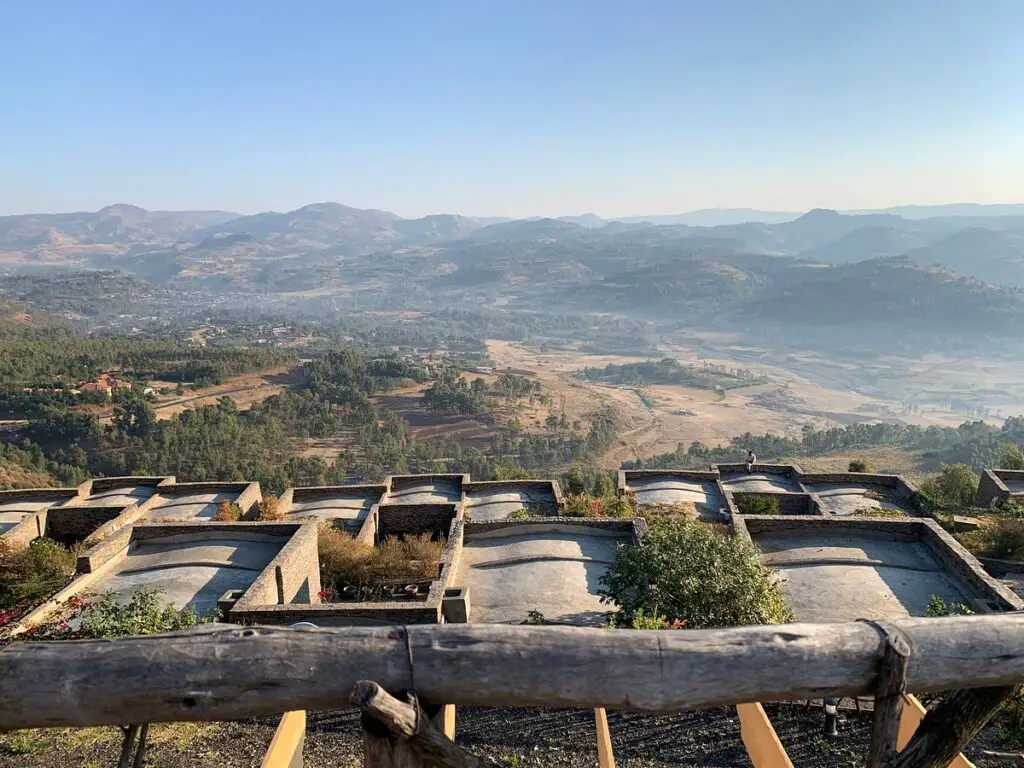
Gondar, also known as Gonder, is a historical city located in the Amhara region of northern Ethiopia. It served as the capital of the Ethiopian Empire from the 17th to the 19th century and is renowned for its medieval castles and palaces. Here’s more information about Gondar:
Gondar was the seat of power for several Ethiopian emperors, including Emperor Fasilides, who founded the city in the 17th century. It served as the capital of the Ethiopian Empire for over two centuries, during which time it flourished as a center of art, culture, and commerce.
The city is famous for its collection of well-preserved castles, palaces, and other architectural marvels. The Royal Enclosure (also known as Fasil Ghebbi) is a UNESCO World Heritage site and the main attraction in Gondar. It encompasses several castles, churches, and other structures built by various emperors, showcasing a unique blend of Ethiopian, Arabian, and European architectural styles.
The centerpiece of the Royal Enclosure is Fasilides Castle, built by Emperor Fasilides himself. This grand castle, with its towering walls, turrets, and balconies, is an impressive architectural feat. It is famous for hosting the annual Timkat (Epiphany) festival, during which the castle’s courtyard is filled with water for the baptismal ceremony.
Located just outside the Royal Enclosure, Debre Birhan Selassie Church is another notable landmark in Gondar. The church is renowned for its exquisite frescoes, including the famous ceiling adorned with the faces of angels. It is considered one of the finest examples of Ethiopian Orthodox church art.
Bahir Dar
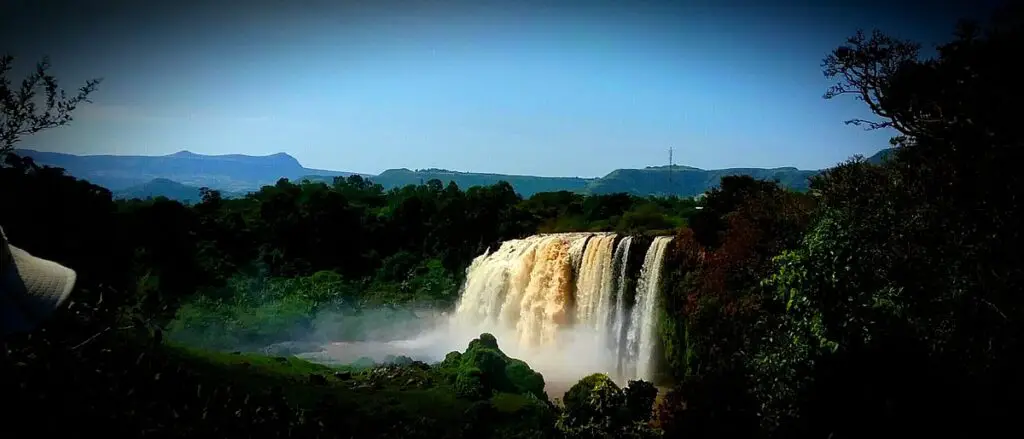
Bahir Dar is a vibrant city located on the southern shore of Lake Tana in the Amhara region of Ethiopia. It serves as the capital of the region and is a popular tourist destination due to its natural beauty, historical sites, and proximity to the Blue Nile Falls. Here’s more information about Bahir Dar:
Bahir Dar is situated on the shores of Lake Tana, the largest lake in Ethiopia. The lake is known for its scenic beauty, islands, and monasteries. Visitors can take boat trips on the lake to explore its islands, visit ancient monastic churches, and observe the rich birdlife and biodiversity.
Located a short distance from Bahir Dar, the Blue Nile Falls is one of Ethiopia’s most impressive natural wonders. Often referred to as the “smoking water” due to the mist it generates, the falls offer breathtaking views and can be reached by a short boat trip followed by a hike.
Lake Tana is dotted with numerous monasteries, some of which date back to the 14th century. These monasteries are known for their religious significance, ancient manuscripts, and unique architectural styles. Some of the notable monasteries include Ura Kidane Mehret, Azwa Maryam, and Kibran Gabriel.
Bahir Dar is home to bustling markets where visitors can experience the vibrant local culture. The main market, known as the Bahir Dar Central Market, offers a wide variety of goods, including fresh produce, spices, traditional crafts, and textiles.
The city of Bahir Dar is known for its rich cultural heritage. Visitors can explore traditional music and dance performances, visit art galleries, and interact with local artisans. The city hosts festivals and events throughout the year, providing opportunities to experience the local customs and traditions.
The Danakil Depression

The Danakil Depression, also known as the Afar Depression, is a geological marvel and one of the hottest places on Earth. It is located in the northeastern part of Ethiopia, extending into Eritrea and Djibouti. Here’s more information about the Danakil Depression:
The Danakil Depression is a low-lying area characterized by a unique combination of volcanic activity, salt flats, sulfur springs, and colorful mineral formations. It is part of the Great Rift Valley system and is known for its active volcanic activity and tectonic movements.
Dallol is a geothermal area within the Danakil Depression and is considered one of the hottest inhabited places on Earth. It features breathtaking and otherworldly landscapes with bubbling sulfur springs, colorful mineral deposits, salt mountains, and acid pools. The area’s vivid colors and alien-like formations make it a photographer’s paradise.
Erta Ale is an active shield volcano located in the Danakil Depression. It is one of the few volcanoes in the world with a persistent lava lake. Hiking to the summit of Erta Ale is a popular adventure activity for visitors, offering a rare opportunity to witness molten lava up close.
The Danakil Depression is home to vast salt flats, such as Lake Assale, where traditional salt mining is still practiced. Local workers extract salt by breaking it into large blocks, which are then transported by camel caravans. The sight of salt caravans traversing the arid landscapes is an iconic image of the region.
The Danakil Depression is inhabited by the Afar people, who have adapted to the harsh conditions of the area. They are known for their resilience, nomadic lifestyle, and traditional cultural practices. Visiting the region provides an opportunity to learn about their unique way of life.
The Danakil Depression is known for its extreme climate. It experiences scorching temperatures, with some of the hottest temperatures recorded on Earth. It is essential for visitors to be prepared for the harsh conditions and take appropriate precautions, such as staying hydrated and protecting themselves from the sun.
Due to its remote location and challenging environment, visiting the Danakil Depression requires careful planning and the assistance of experienced tour operators. It is recommended to join organized tours that provide necessary logistics, guides, and ensure visitor safety.
Harar
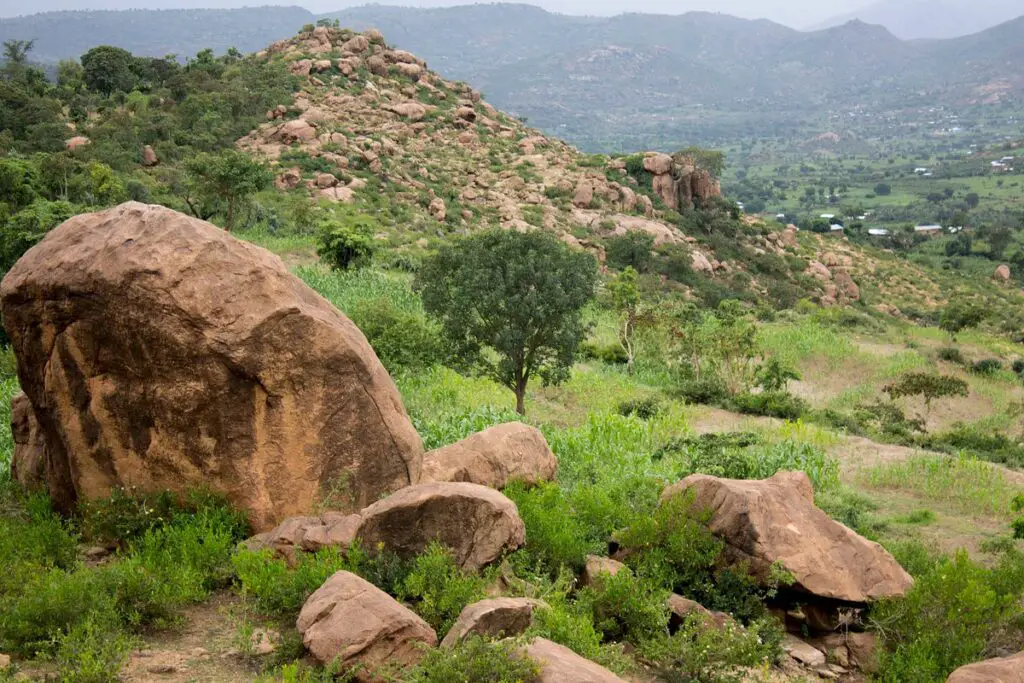
Harar is a historic city located in the eastern part of Ethiopia, in the Harari Region. It is recognized as a UNESCO World Heritage site and is known for its rich cultural heritage, unique architecture, and vibrant atmosphere.
Harar is one of the oldest cities in Ethiopia, with a history dating back over a thousand years. It has served as an important trading center and a melting pot of diverse cultures and religions, including Islam, Christianity, and traditional Ethiopian beliefs.
The old walled city of Harar, known as Harar Jugol, is the main attraction for visitors. It is a maze-like network of narrow alleyways and ancient buildings, filled with bustling markets, traditional houses, and mosques. The walls surrounding the old city were built in the 16th century and have several gates that serve as entry points.
Harar is known for its unique cultural traditions. The city is home to the Harari people, who have their own distinct language, customs, and architectural style. The traditional Harari houses, characterized by intricately carved wooden doors and colorful facades, are a prominent feature of the city.
One of the fascinating activities in Harar is the nightly hyena feeding ritual. Local “hyena men” feed wild hyenas that gather outside the city walls. This unique spectacle has become a popular tourist attraction, and visitors can watch from a safe distance as the hyenas approach to receive their food.
The Harari Museum, located in the old city, showcases the history, culture, and art of the Harari people. It displays a collection of artifacts, traditional costumes, musical instruments, and historical documents that provide insights into the rich heritage of the region.
Lake Tana

Lake Tana is the largest lake in Ethiopia and the source of the Blue Nile River. It is located in the northwestern part of the country, near the city of Bahir Dar. Here’s more information about Lake Tana:
Lake Tana covers an area of approximately 3,600 square kilometers (1,390 square miles) and has a maximum depth of about 14 meters (46 feet). It is situated at an elevation of 1,788 meters (5,866 feet) above sea level. The lake is surrounded by mountains and hills, creating a picturesque and tranquil setting.
Lake Tana is often referred to as the “source of the Blue Nile” as it is the primary reservoir for the river. Several rivers and streams flow into the lake, and the Blue Nile starts its journey from the lake’s northern outlet. The Blue Nile is one of the major tributaries of the Nile River, and Lake Tana plays a significant role in the river’s hydrology.
Lake Tana is dotted with numerous islands, many of which are home to ancient Ethiopian Orthodox Christian monasteries. There are about 20 monasteries scattered across the lake, some dating back to the 14th century. The monasteries are known for their religious and historical importance, as well as their remarkable religious art and ancient manuscripts.
Lake Tana is renowned for its diverse ecosystem and rich biodiversity. It supports a variety of fish species, including endemic species found only in the lake. The lake and its surrounding wetlands are also vital habitats for numerous bird species, making it a popular destination for birdwatching enthusiasts.
Visitors to Lake Tana can take boat trips or cruises to explore the lake’s islands and monasteries. These excursions provide an opportunity to witness the cultural and religious heritage of the region, observe wildlife, and enjoy the scenic beauty of the lake. It is advisable to hire experienced guides or join organized tours to ensure a smooth and informative experience.
Omo Valley
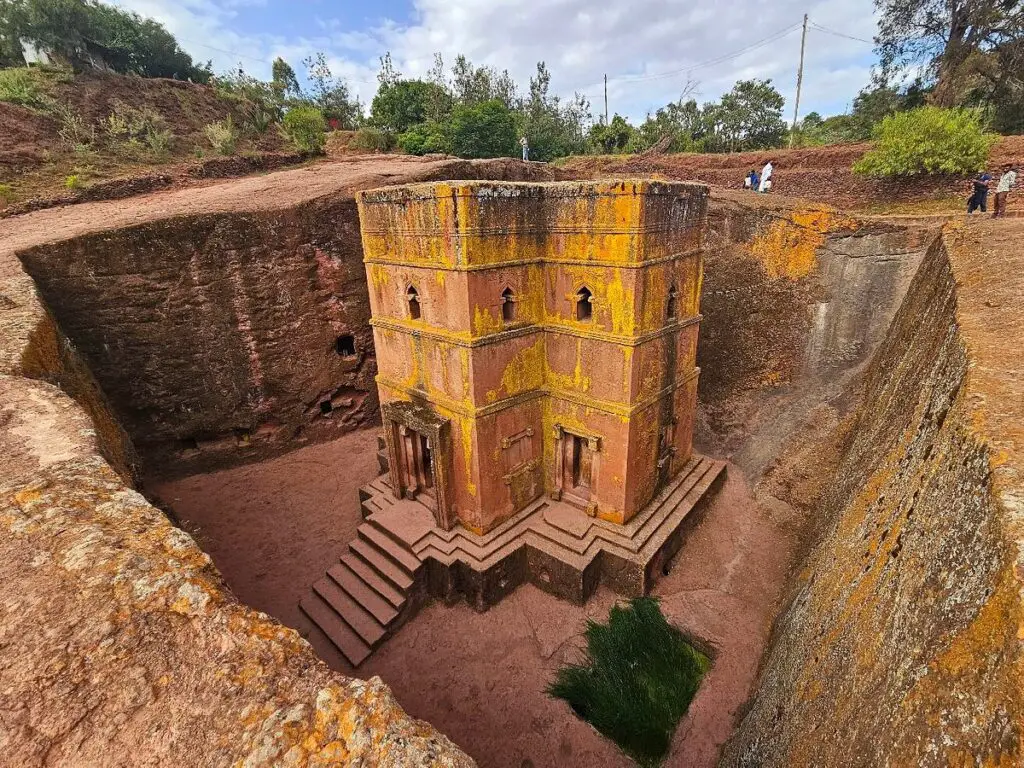
The Omo Valley is a region located in southwestern Ethiopia, near the border with South Sudan and Kenya. It is known for its cultural diversity and the presence of numerous indigenous tribes, making it a popular destination for cultural and ethnographic tourism.
The Omo Valley is home to a diverse array of indigenous tribes, each with its unique culture, traditions, and language. Some of the prominent tribes include the Hamar, Mursi, Karo, Dassanech, Banna, Ari, and Konso. These tribes have preserved their traditional way of life, including distinctive clothing, body adornments, rituals, and practices.
Visiting the Omo Valley offers a chance to immerse oneself in the rich cultural heritage of the indigenous tribes. Travelers can witness traditional ceremonies, such as bull jumping among the Hamar people or the elaborate body painting and scarification practices of the Karo tribe. They can also engage in local markets, where tribes gather to trade goods, livestock, and crafts.
The Omo Valley is a paradise for photographers due to the vibrant traditions and striking appearances of the tribes. The unique hairstyles, body paint, lip plates, and decorative jewelry make for compelling subjects. However, it is essential to respect the privacy and cultural sensitivities of the local communities when photographing.
The Omo Valley is not just about its people but also offers breathtaking natural landscapes. The region is characterized by lush riverbanks, savannah grasslands, and dramatic cliffs. The Omo River, which runs through the valley, provides a picturesque backdrop for exploration and photography.
In recognition of its cultural and natural significance, the Lower Omo Valley has been designated as a UNESCO World Heritage site. The landscape showcases the close relationship between the indigenous communities and their environment, highlighting the traditional agricultural practices and sustainable land use.

